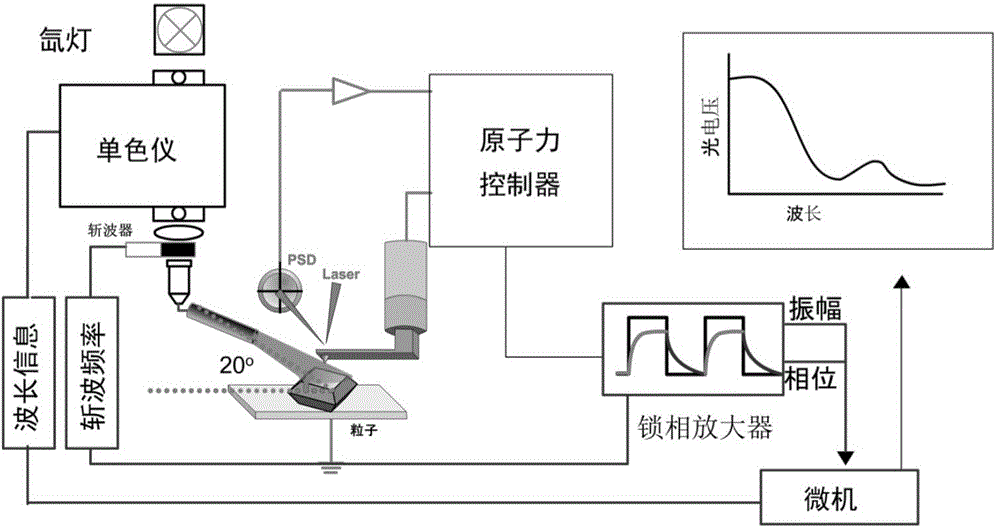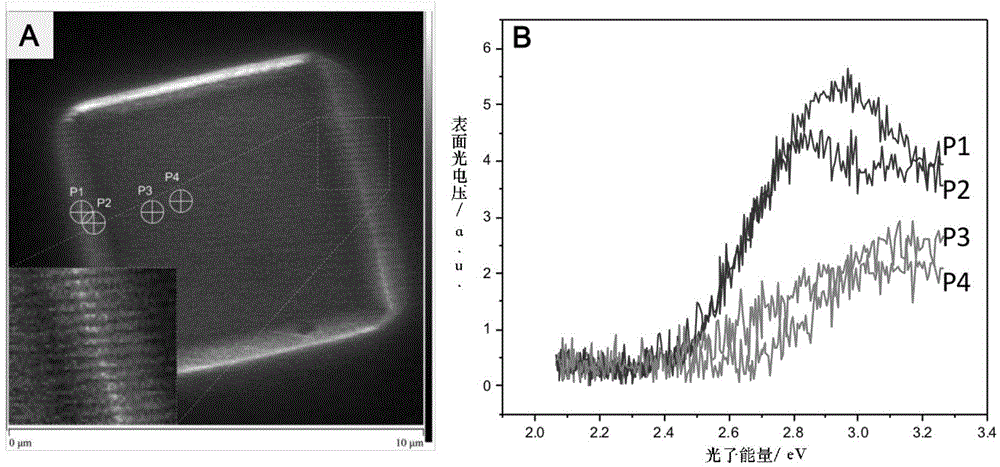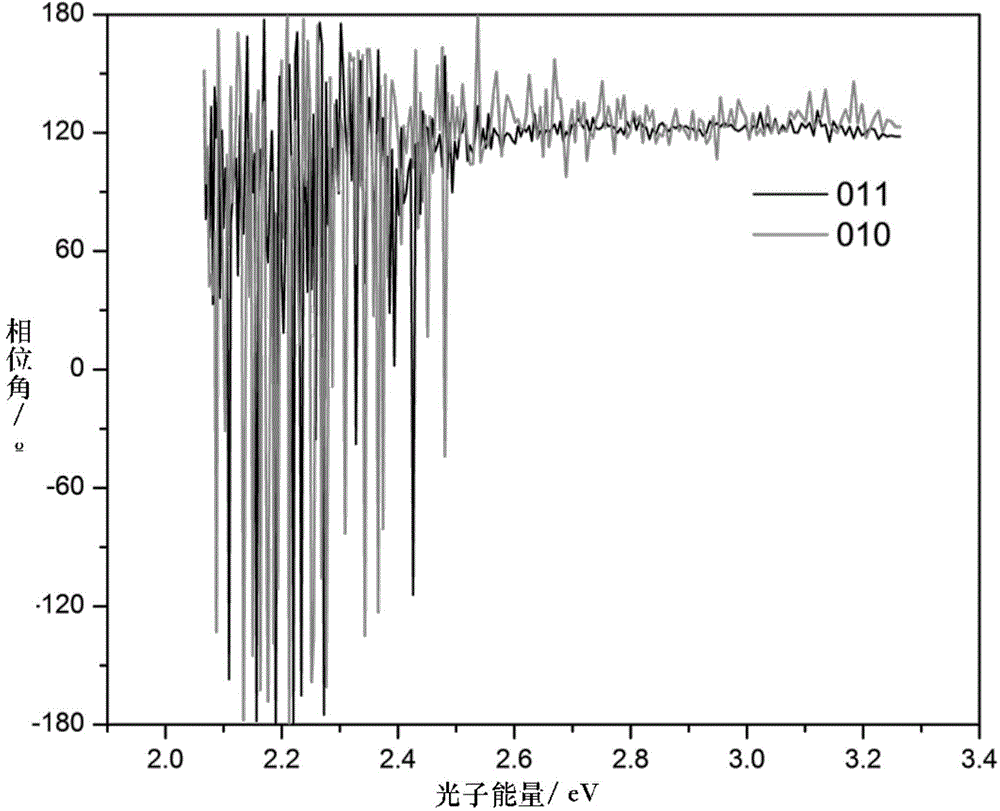Atomic force microscope and surface photovoltage spectrum combination method
A technology of surface photovoltage spectroscopy and atomic force microscopy, which is applied to the measurement of electrical variables, measuring devices, instruments, etc., can solve the problems of lack of spatial resolution of surface photovoltage spectroscopy, limitations of surface photovoltage spectroscopy, and unavailability
- Summary
- Abstract
- Description
- Claims
- Application Information
AI Technical Summary
Problems solved by technology
Method used
Image
Examples
Embodiment approach
[0018] 1 BiVO 4 The particles were fixed on the FTO conductive glass by spin coating, and washed with ethanol and secondary water in sequence. Dry on a hot table at 70°C;
[0019] 2. Turn on the atomic force microscope and scan the shape first to find the particles to be tested. Select the area to be tested and continuously narrow the scanning range until the scanning range approaches 0 nanometers;
[0020] 3 Open the atomic force surface potential output interface, and set the output signal on the front panel of the atomic force controller to electric potential. Input this signal to the signal input terminal of the lock-in amplifier;
[0021] 4 Turn on the monochromator, turn on the xenon lamp, and select 380 nm as the initial scanning wavelength.
[0022] 5 Turn on the chopper, set the frequency to 6 Hz, and input the chopper frequency signal to the lock-in amplifier;
[0023] 6 Connect the amplitude and phase signals obtained by the lock-in amplifier to the data acquis...
PUM
 Login to View More
Login to View More Abstract
Description
Claims
Application Information
 Login to View More
Login to View More - R&D
- Intellectual Property
- Life Sciences
- Materials
- Tech Scout
- Unparalleled Data Quality
- Higher Quality Content
- 60% Fewer Hallucinations
Browse by: Latest US Patents, China's latest patents, Technical Efficacy Thesaurus, Application Domain, Technology Topic, Popular Technical Reports.
© 2025 PatSnap. All rights reserved.Legal|Privacy policy|Modern Slavery Act Transparency Statement|Sitemap|About US| Contact US: help@patsnap.com



